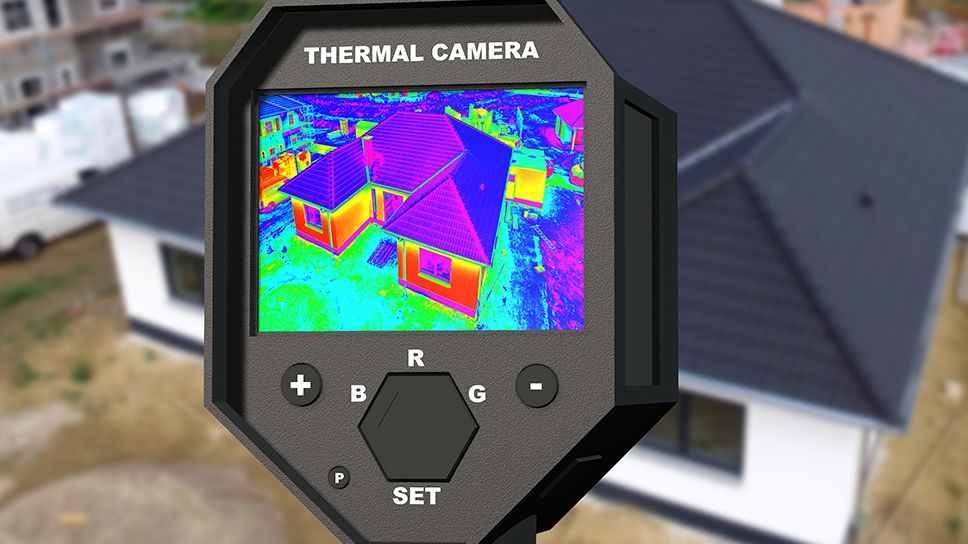Horizontal damp proof course — why is it so significant?
Horizontal damp proof course is a type of insulation used to protect the foundations against moisture. It is laid horizontally between the strip footing and the foundation wall as well as at the connection point of the foundation walls and the external walls of a building. Its major role is to protect against capillary action, that is the phenomenon of walls drawing moisture and moving it upwards.
This type of insulation plays another important role as well. It clearly separates the foundation walls from the overground structures and therefore they do not create a continuous structure. As a result, over time, the structures will not start to crack so soon, causing the building to subside and the foundations to deteriorate.
It is the most important, and sometimes sufficient protection. Horizontal damp proof course applied to foundation walls will be efficient, only when we ensure its continuity by connecting it with the dampproofing of the ground floor and the walls.
Why does it have to be made so carefully? Experts argue that damp proof course is an element of a house that requires utmost care. The reason is simple. It supports the entire building. Additionally, even if it is possible to repair it in the future, such repairs are, first of all, very difficult and, secondly, very expensive.
Horizontal damp proof course — what material to choose?
In the past, the most popular material for damp proof course was bitumen membrane with pitch laid in two layers. Remember that it is pitch that provides dampproofing properties, while bitumen membrane acts only as its reinforcement.
At present, new generation materials are used increasingly more often, such as damp proof membranes or heat-welded bitumen membranes. See their characteristics below.
- Damp proof membranes
A thin sheet material with thickness ranging from 0.2 to 2 mm. For dampproofing the foundation, membranes at least 0.4 mm thick should be used. Some of them are covered with embossings, which facilitates bonding with mortar underlying the first layer of elements intended for erecting walls (e.g. bricks or hollow bricks).
- Heat-welded bitumen membranes
The base of the membranes is made of polyester fibre, which is bilaterally coated with asphalt. They are available in rolls, usually 1 m wide, 5 m or 10 m long and 3.2–5.2 mm thick. Remember that the thicker bitumen membrane the more resistant it is against damage and easier to lay. Heat-welded bitumen membranes are flexible, resistant to temperatures ranging from –10° to +120°, and puncture resistant.
Insulating foundation area with polyurethane foam
A material we cannot omit due to its excellent insulating properties is polyurethane foam. Insulating foundations with polyurethane foam delivers waterproofing and thermal insulation effects.
PUR foam is applied by spraying as a uniform, jointless coating. The advantage of this insulating method arises from its firmness and crush strength, and unusual moisture resistance. Its strength of adhesion to walls makes it impossible to move or remove. Because polyurethane foam quickly reaches its maximum properties, it is possible to continue further construction stages soon after the foam is applied. A significant advantage of polyurethane foam insulation is that we can reduce the time and costs of insulating the foundations to minimum — all the works take no more than just one day.
There are also tremendous advantages of using this material for thermal insulation of the foundations. Thermal insulation made of PUR foam is not subject to degradation over time and perfectly adheres to the surface. What is more, it is an economical and efficient method compared to traditional materials available in the market.
Weather conditions constitute an important factor in the context of the foundation insulation. In order for PUR foam insulation works to go well, the temperature should not exceed 16°C, while wind and humidity should be at a relatively low level. Additionally, walls must be primed in order to eliminate the negative impact of moisture on the insulating layer of PUR foam.
What could happen if horizontal damp proof course is not properly made?
If a damp proof course is not properly made, it may lead to capillary action. As a result, ground floor walls may become damp, even within the entire height of the floor.
What is more, a long-term contact of building walls with ground water leads to their deterioration. It is caused by minerals present in water and repetitive cycles of freezing and thawing of the walls. Remember that in our climate zone, there may be as many as 200 of such cycles.

 This website uses cookies. By using this website, you consent to the use of cookies in accordance with your browser settings.
This website uses cookies. By using this website, you consent to the use of cookies in accordance with your browser settings.